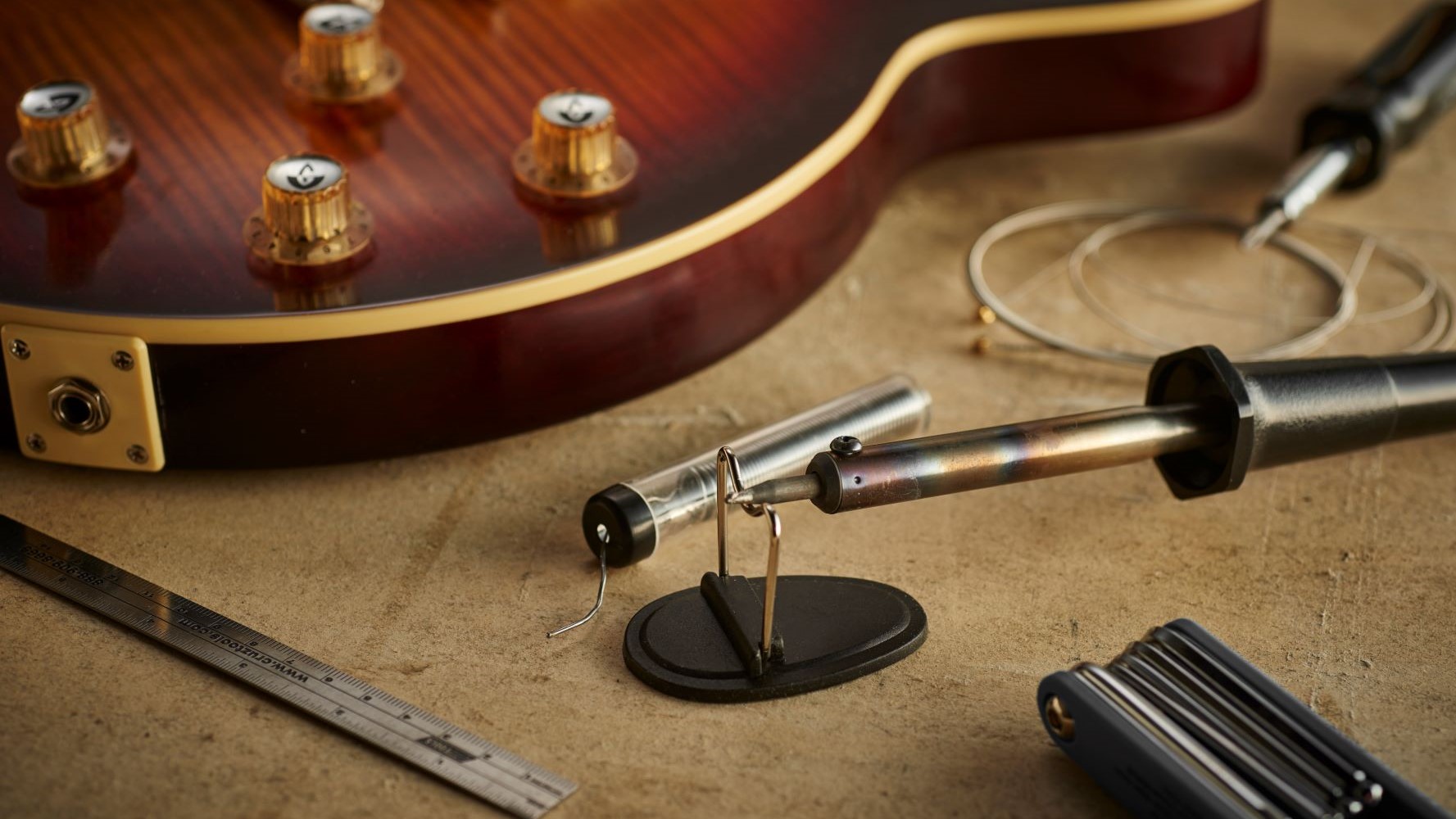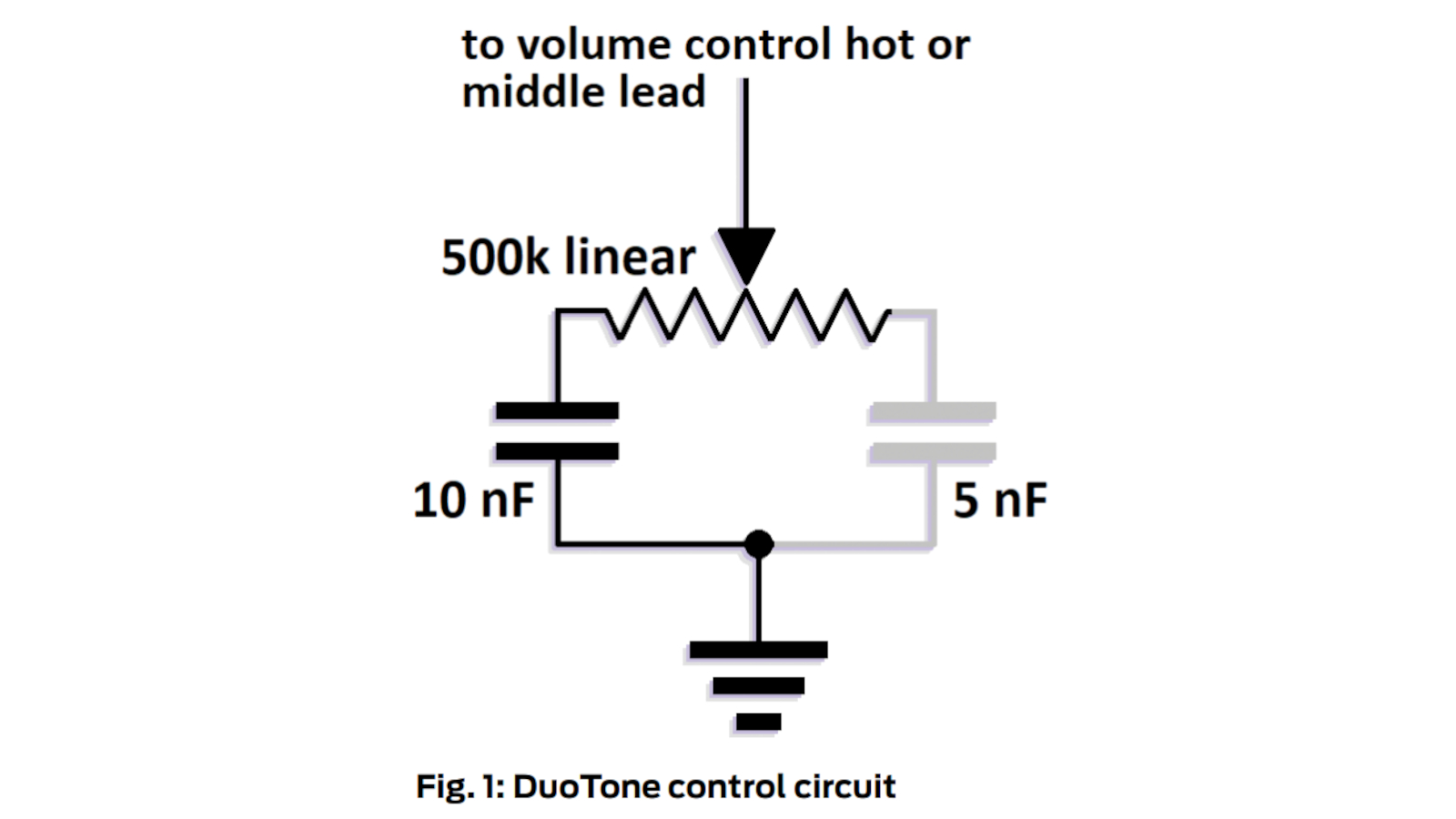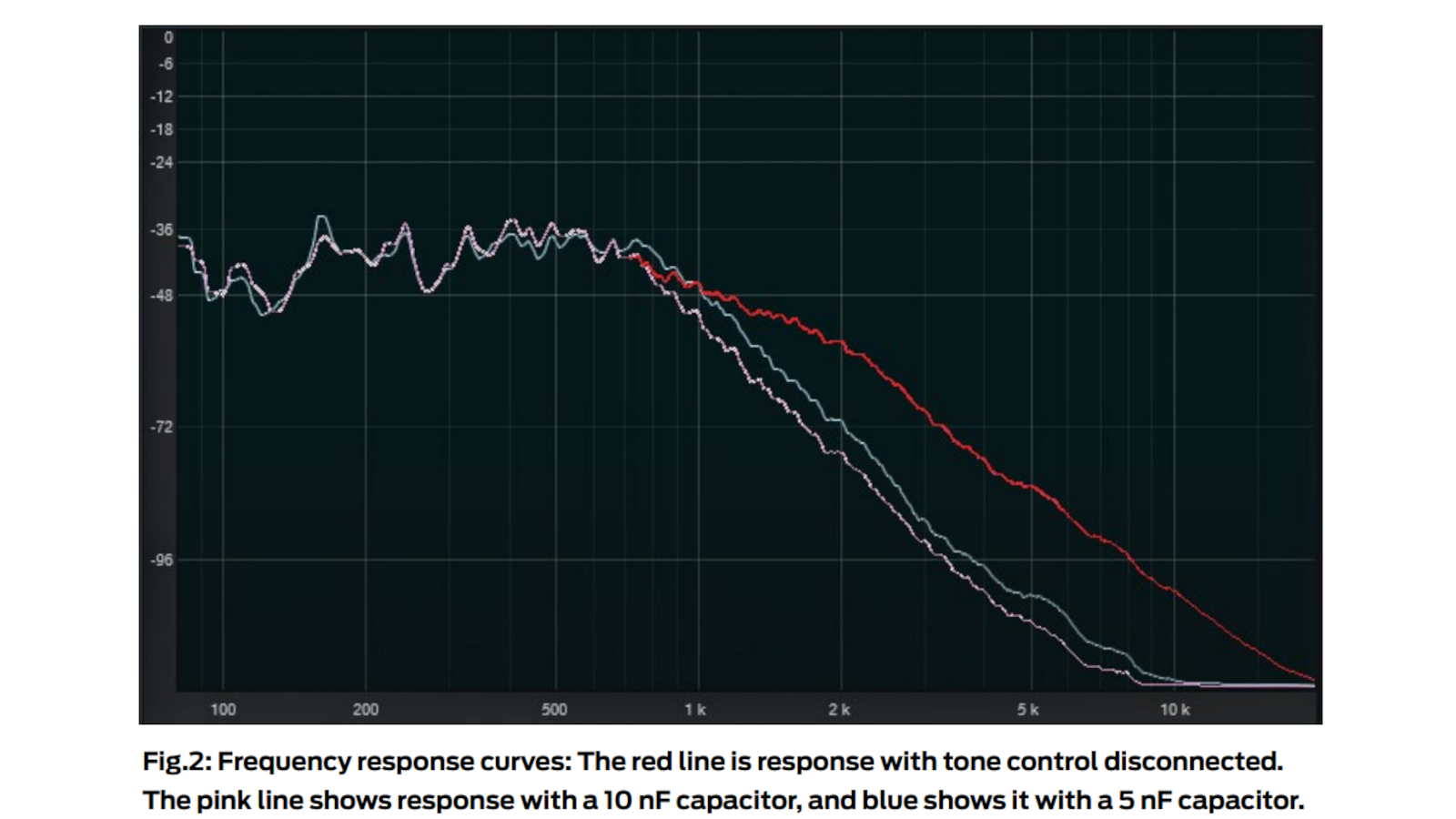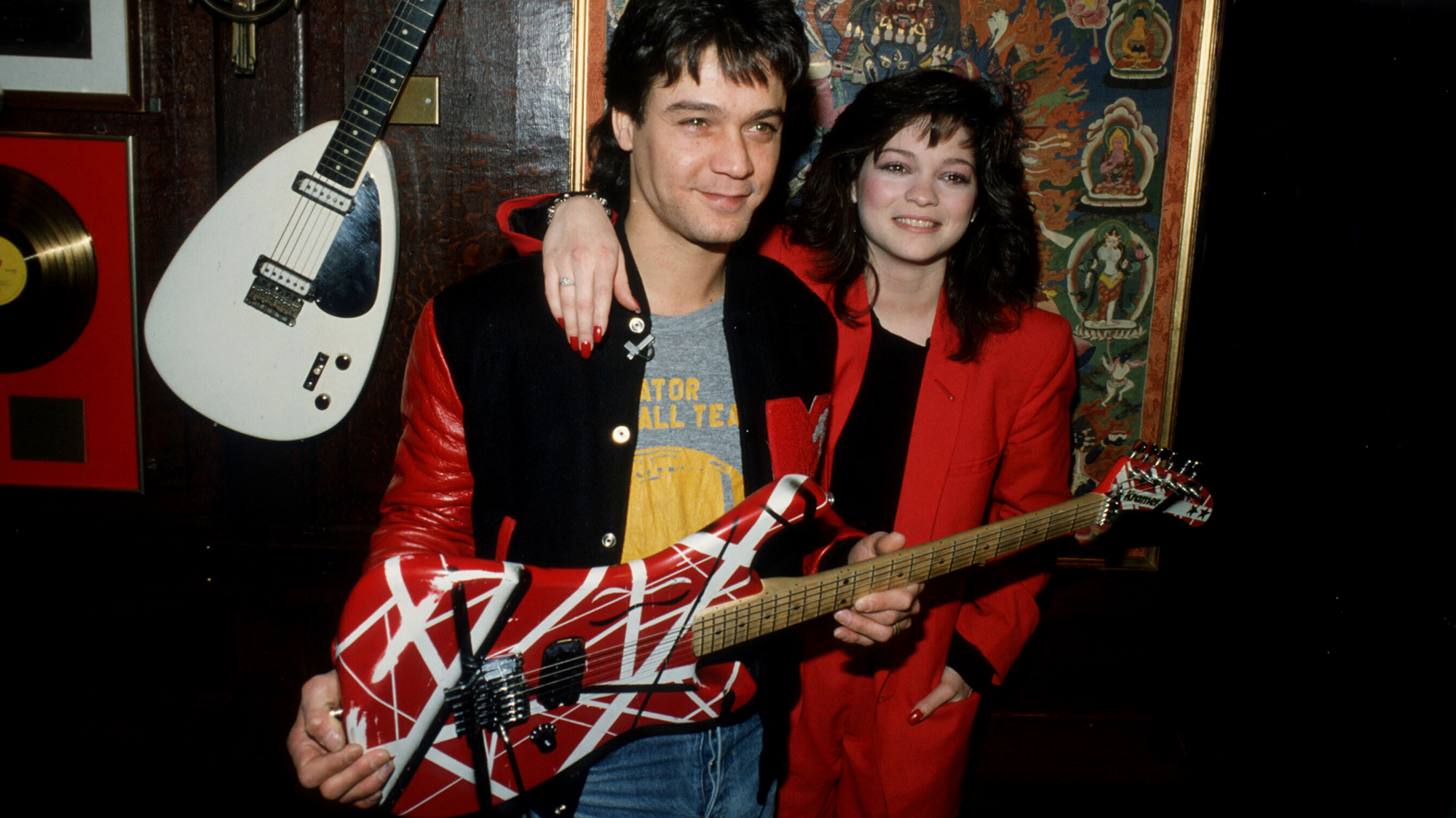Mod Your Axe with the Duo-Tone Control
Here’s how to rewire your guitar’s tone control to provide two different resonances along with the traditional high-frequency rolloff.

The tone control hasn’t changed much over the years. It’s a capacitor in series with a potentiometer, and these connect between the volume control’s hot (or middle) terminal to ground. Removing the gray capacitor (5 nF) shown in Fig. 1 (see below) produces the traditional circuit, though the potentiometer may be a different value (and the remaining capacitor will probably be 20 nF, or 0.02 µF).

In their quest for “better” tone, many players make changes to the capacitor, the potentiometer or the wiring. Most of these mods don’t necessarily make a guitar’s tone better, just different. However, that difference may be better for the way you play, your pickups or your musical tastes.
The studio offers many opportunities to change electric guitar tone. Before going into amp sim distortion, for example, you could use an EQ plug-in rather than the guitar’s tone control to reduce highs, because it allows you to dial in the EQ frequency and rolloff more precisely. But unlike a plug-in, a guitar’s tone control interacts with the pickup to accent particular resonances. And that’s a difficult effect to obtain solely with EQ.
The Duo-Tone control shown here rewires the guitar’s tone control to provide two different resonances along with the traditional high-frequency rolloff. The tone control’s capacitors have smaller values than usual, so the tone isn’t quite as dark (see Fig. 2 below). The 500k linear-taper potentiometer takes the caps out of the circuit when centered; turning it clockwise brings in one tone, while spinning it counter-clockwise brings in the other.

To find the capacitor values you prefer, temporarily disconnect your tone control and get two leads with alligator clips. Attach one lead to the volume control’s hot terminal and the other lead to ground.
Now clip the remaining lead ends to different capacitors and pick the values that produce your two favorite tones – for example, 5 nF (0.005 µF) and 10 nF (0.010 µF). Then rewire your tone control as shown in Fig. 1 to accommodate the extra capacitor. You can also wire the tone control’s middle terminal to the volume control’s middle terminal for “vintage” wiring, or to the volume control’s hot terminal for “modern” wiring.
Modding the Mod
The pot’s value is a compromise. A 250k pot lets you dial in tone with more precision, but it dulls the sound somewhat, even with the pot centered. A 1 Meg pot makes no detectable difference to the sound when centered, but the control acts more like a switch when it’s turned, because the range over which you can hear a tonal change is small. A 500k pot gives a smoother action and produces only the slightest dulling (you may not even notice it).
Another mod involves using a pot with a push-pull switch to disconnect the tone control and remove any possible loading. Insert the switch between the tone control’s middle terminal and the volume control, or between the junction of the two capacitors and ground. This is helpful if you use a 250k pot but probably unnecessary for the other values, making this mod even easier.
Have fun!
Get The Pick Newsletter
All the latest guitar news, interviews, lessons, reviews, deals and more, direct to your inbox!
“Write for five minutes a day. I mean, who can’t manage that?” Mike Stern's top five guitar tips include one simple fix to help you develop your personal guitar style
"It’s like you’re making a statement. And you never know where it’ll lead." Pete Thorn shares the tip that convinced Joe Satriani he was the right guitarist for the SatchVai Band










